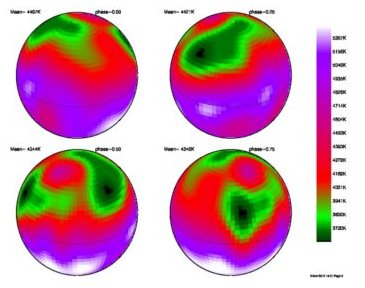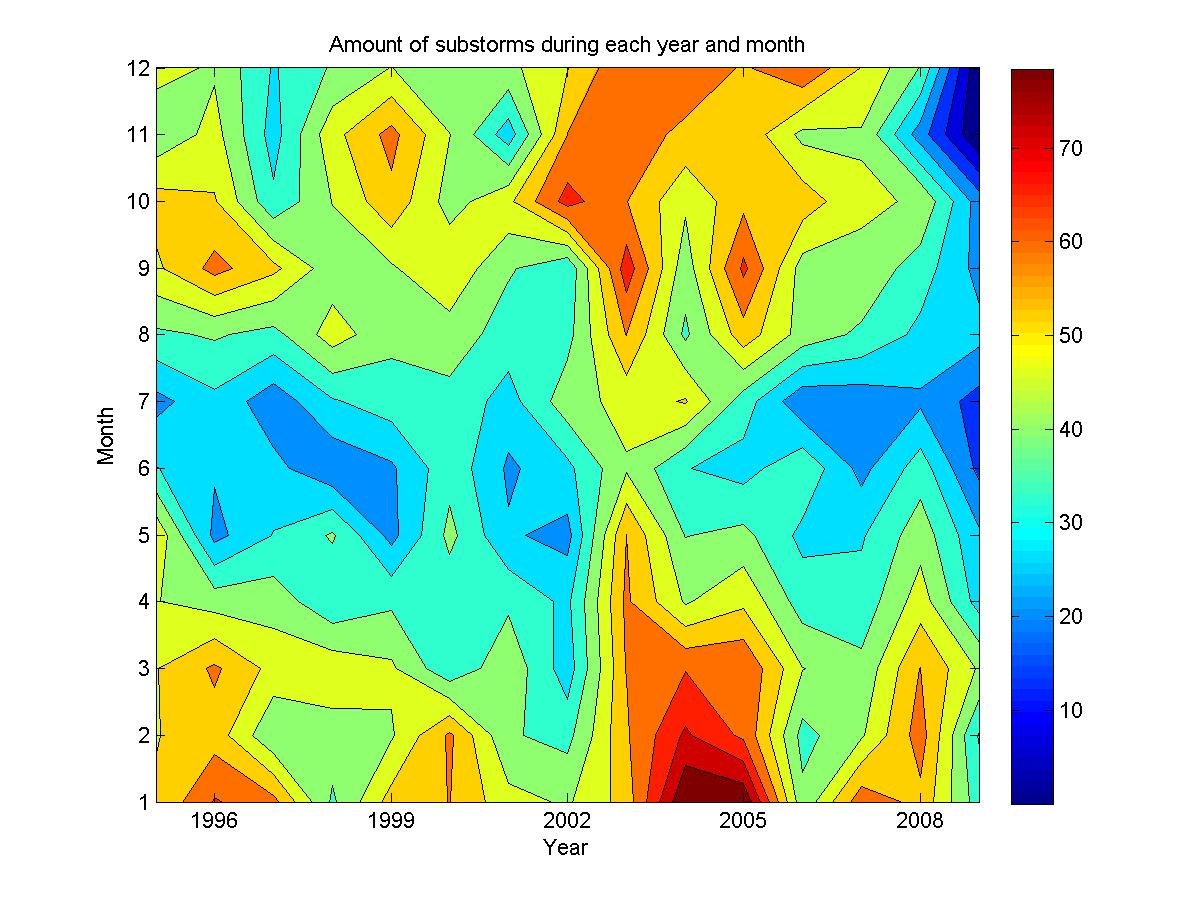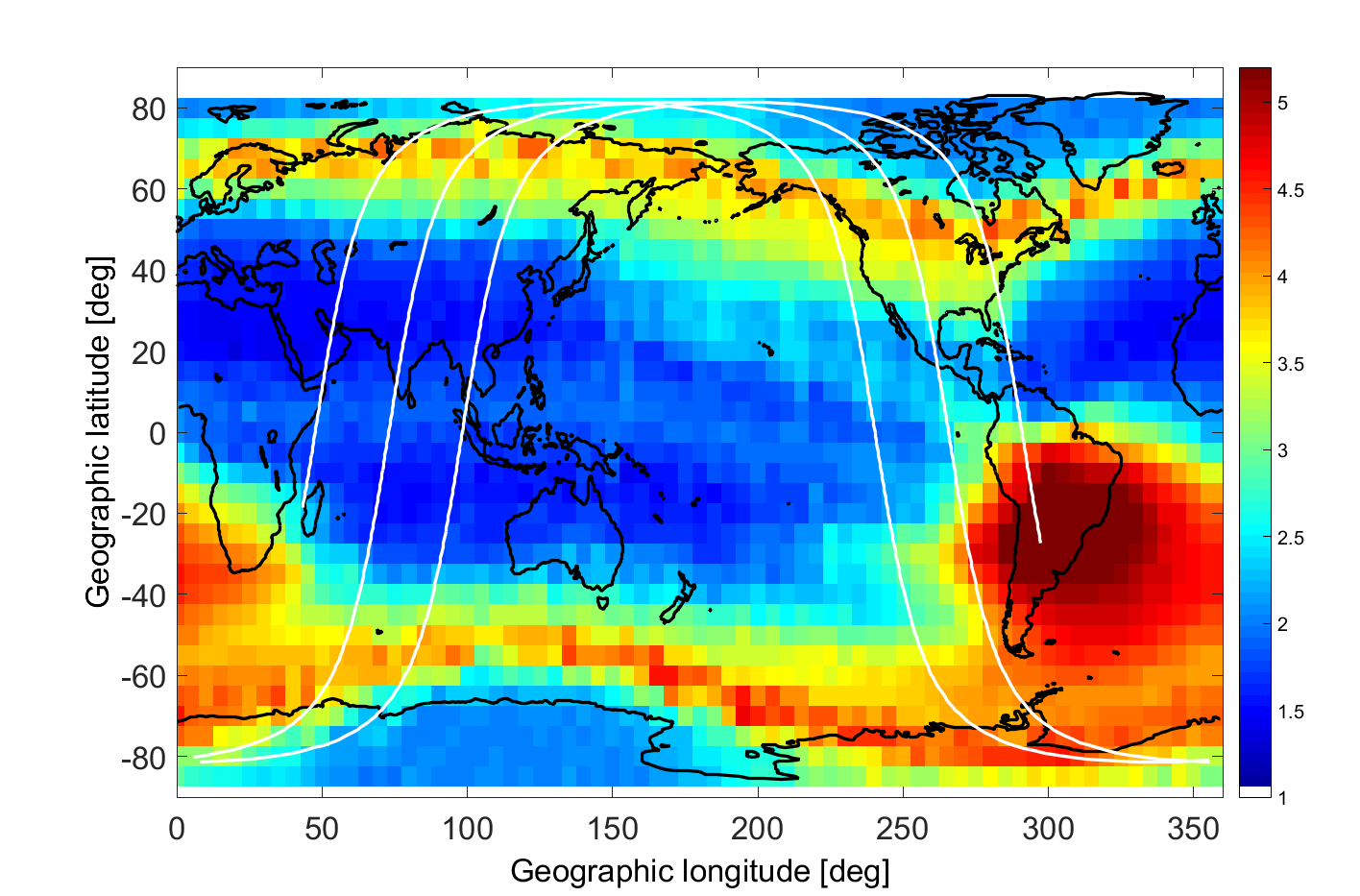Research
ReSoLVE aims to better understand the dramatic changes in the Sun during the last 100 years, and their effects in the near-Sun and near-Earth space environments.
We concentrate on the most important open question of solar change in recent times: the unknown centennial evolution of the solar poloidal magnetic field and its most important role for the solar dynamo mechanism, for the long-term variability in solar activity, the structure of solar corona and solar wind, in particular the high-speed solar wind streams (HSS) and their effect in causing magnetic storms and substorms, varying the flux of energetic particles in the Earth's magnetosphere, and causing effects in the Earth's atmosphere.
The research in ReSoLVE is related to Space Climate and is conducted in five closely collaborating teams (HELIOS, DYNAMO, MAGNETIC, ENERGETIC and COSMIC).
HELIOS (led by Prof. Kalevi Mursula, University of Oulu)
Main objective of HELIOS team is to derive a reliable estimate on the centennial evolution of the solar poloidal field in collaboration with the other teams.

Solar magnetic fields are generated by a dynamo whose basic processes are non-uniform solar rotation and convective turbulence in the solar convection zone. The magnetic dynamo consists of two phases that are called the toroidal and the poloidal phase, according to the direction of the prevalent magnetic fields in the convection zone. The poloidal phase is centered around sunspot minimum, when large unipolar magnetic fields cover the solar poles. The toroidal phase is around sunspot maximum, when new magnetic flux appears on the solar surface in the form of concentrated magnetic field regions. In the dynamo, the two field components cyclically feed each other, the toroidal component being generated from the poloidal component by differential rotation, and the poloidal field from toroidal by rotationally influenced, helical turbulence. Consequently, the two phases are expected to be connected to each other and to have a similar long-term evolution. However, this has not been reliably tested because the poloidal field is known only for the last 4 solar cycles. Dynamo models aiming to understand long-term variability of solar activity need information on both phases of the dynamo process over centennial time scales.
The centennial evolution of the toroidal field is reliably known from sunspot observations at least for the last 200 years, showing that the maximum of the toroidal field was in late 1950s (the maximum of GMM). In comparison, the 40-year record of the solar polar field only covers a part of the decreasing phase of the GMM, and depicts a decline since 1980s. The main missing element for solar dynamo models to explain the long-term evolution of solar activity is the lack of reliable information on the centennial evolution of solar the poloidal magnetic fields of the Sun. This is the key open issue in solar dynamics that ReSoLVE aims to resolve using the versatile and complimentary, high-level expertise of the five teams included, together with their collaborators. Knowing the the two phases of the solar dynamo over the last 100 years, we can also better understand the causes of the exceptional solar activity leading to the rise and recent fall of the Grand Modern Maximum, and particularly its decline in the last 10 years and the causes of the imminent Grand Modern Minimum.
Understanding the centennial variation of solar activity not only improves the theory of the Sun and other cool stars, but also helps in better understanding the important consequences of solar activity in the whole heliosphere (space dominated by solar magnetic activity), including the near-Earth environment. Magnetic storms and substorms are the largest solar related disturbances in the near-Earth space. They are mainly caused by two common solar wind structures, the interplanetary coronal mass ejections (ICME) and high-speed solar wind streams. An ICME is an interplanetary expansion of a coronal mass ejection (CME), where a large coronal loop breaks down, emitting vast amounts of solar material into the interplanetary space. The CMEs are related to magnetically active solar regions and reflect the solar toroidal phase, having maximum occurrence around sunspot maxima. On the other hand, the HSSs arise from large empty regions of solar corona called the coronal holes (CH), which normally develop around the solar poles during the declining phase of the solar cycle. While sunspots and toroidal fields are decreasing at this time, the intensity of solar polar fields is increasing and the solar magnetic field approaches the poloidal phase. However, this development is not uniform and often there are long extensions of polar coronal holes toward the solar equator. Such longitudinally asymmetric CH structures, frequently called "elephant trunks", are important because they emit fast solar wind over a wide latitude range. When the fast HSS stream from a trunk reaches the prior slow solar wind, an important interaction region arises with favorable conditions for magnetic storms and auroral substorms. These regions are called corotating interaction regions (CIRs) because they can repeat several times in successive solar rotations.
Estimates of the global energy budget in the Earth's magnetosphere/ionosphere system suggest that, despite the larger peak power of ICME storms, the total energy dissipated during long HSS/CIR storms is at least of the same order of magnitude as in an ICME storm. The poloidal phase is also very important because the HSS/CIR storms are most effective in accelerating magnetospheric energetic particles (e.g., radiation belt, ring-current and auroral particles). Also, the most severe space weather (SW) effects on technology like the "killer electrons", which are known to be responsible for the loss of several satellites, mainly occur during HSS/CIR storms. These results suggest that the solar poloidal phase, despite its superficially inactive nature, is at least as important for space weather and other consequences of solar activity in the near-Earth environment as the solar toroidal phase. This further underlines the need of knowing the development of the poloidal phase more accurately and over a longer time interval than so far.
DYNAMO (led by Doc. PhD. Maarit Käpylä, Aalto University)
Main objective of DYNAMO team is to develop a solar dynamo model which can reproduce the observed centennial evolution of toroidal and poloidal fields in collaboration with MAGNETIC, HELIOS and COSMIC teams.
Direct numerical simulations of turbulence and magnetic fields

Magnetism is ubiquituous in the universe - planets, stars, galaxies and even the intergalactic medium are all magnetized. The modern society is strongly affected by the magnetic activity manifestations of our star, the Sun. The space missions, air traffic, power grids and telecommunication networks are vulnerable to disturbances caused by bad space weather, i.e. increased solar magnetic activity. The magnetized objects share a few common features: at least they are rotating and the matter in which the magnetic fields are generated (interior of the Earth, solar convection zone, interstellar matter) is turbulent. Understanding the generation of magnetic fields, therefore, is intrinsically linked to studying turbulent fluids under extreme conditions. Such studies are out of the scope of analytic methods and laboratory experiments, the only viable tool being numerical modelling. Even that approach is extremely challenging: to be able to understand, explain, and predict the behavior of the global-scale magnetic field of the Sun, one needs to build a numerical model of the fine details of the motions within the star. This can be achieved only through by developing the fastest and the most accurate possible algorithms that are suitable for massively parallel computation, and continuously improving them to take advantage of the new emerging ICT technologies (such as cloud and GPU computing).
As a result of the modelling, huge datasets with three-dimensional spatial information of the basic physical quantities (such as velocity, magnetic field, density, temperature) are obtained. As the magnetohydrodynamic equations are integrated over time, a statistically steady state is usually obtained, but the solutions most often show systematic behavior (large-scale circulation, magnetic cycles) making it necessary to study also the time dimension of the data. In this way, even the moderated-sized simulations create big data when all the information is build into a spatiotemporal stack. With increasing amount of data, the development of efficient and computationally economical data analysis methods is an urgent requirement in our research group.
The lines of study described above constitute a major part of a discipline called computational astrophysics. In the year 2012, computational astrophysics user group, of which roughly half of the projects are lead by the CMDAA group researchers, consumed roughly 250 000 core hours per user of the national computing centre CSC resources. This is the top number amongst all the disciplines, and reflects the large volume of computational resources required for the execution of the models.
Time series analysis of astronomical datasets
Systematic observations of the Sun have been carried out for over four hundred years, during the last century with increasing amount of space-borne machinery. Complemented with the data obtained for other solar-type stars coming from many observational infrastructures scattered on the best observing sites over the globe and some satellites, the amount of data is accumulating with increasing speed also in the observational frontier. Investigation of these objects is important, as this sheds some light into the history of the Sun, as most of the targets observable to Earthly astronomers are rapid rotators, resembling the Sun at an earlier age. The most common method to search for systematic cyclic behavior (as observed on the Sun), indicative of a magnetic activity cycle, is to use time-series analysis methods on stellar photometric data. For astronomical observations in the optical range of wavelengths made from the ground, the observations are inevitably interrupted during daytime and due to bad weather. In astronomical community, therefore, a special class of time series analysis methods capable of effective functioning even in the presence of long time intervals of missing data (called as gaps) has been developed and are extensively applied in the stellar community.
One of the major goals of our research group is to achieve a better understanding of solar activity. A complementary path to the intensive numerical modelling is provided by the time series analysis of solar activity tracers utilizing the vast amount of spatiotemporal data that is continuously collected by satellite and ground-based observations. Although our modelling efforts indicate that predictability of the future solar magnetic activity, in the generation process of which the stochastic turbulent effects play a key role, is low, it is very important to study and try to determine the key factors leading to long-term increased/decreased magnetic activity level of the Sun. Such epochs are known as grand minima (such as the Maunder minimum) and maxima (such as the present Grand Modern Maximum that seems to have come to its end).
Inversion methods applied to stellar spectroscopic and spectropolarimetric data
The Sun is the only stellar object the surface of which we can directly observe - the other stars, even the closest and biggest ones, are seen as point sources even with the most powerful telescopes. As mentioned above, one can always study the lightcurve variations caused for instance by large starspots from photometric datasets, but then one recovers quite unreliable information on the actual latitudinal location of the spot. Is it possible at all to "see" the surfaces of other stars?
Almost magically, spectroscopy and spectropolarimetry offer an indirect way of mapping the surfaces of stars - the starspots make a finger print (in practise a bump) in the absorption lines and moreover the structures being magnetized causes a Zeeman effect in the polarized spectra. Due to these effects, systematic consequtive observations of the stars can be transformed, with the aid of sophisticated inversion methods, into surface temperature and magnetic field maps of the objects. Almost 20-year long time-series of spectroscopic and ten-year long time-series of spectropolarimetric observations of rapidly rotating late-type stars has been collected with the SOFIN-spectrograph at the Nordic Optical telescope, La Palma, Spain. The NOT data set is complemented with the observing programme carried out at the ESO La Silla 3.6m telescope with HARPSPol spectropolarimeter. Rapidly spinning young Suns have revealed to exhibit increased magnetic activity level, large high-latitude spots with highly non-axisymmetric configuration, and time evolution characterized by an azimuthally directed dynamo wave and sudden jumps of the activity level from one active longitude to the other. This is to be contrasted with the present-day Sun with small spots occurring at lower latitudes migrating in the latitudinal direction.
MAGNETIC (led by Prof. Eija Tanskanen, Aalto University)
Main objective of MAGNETIC team is to characterise centennial evolution of magnetospheric dynamics leading to improved information on long-term solar-wind magnetosphere-ionosphere interaction in collaboration with ENERGETIC, HELIOS and DYNAMO teams.
Aalto University is a home of the MAGNETIC team. Our team's goal is to characterise centennial evolution of magnetospheric dynamics leading to improved information on the Sun-Earth connection. The research topics include
- Geomagnetic activity during last 100-150 years.
- Auroral substorms and geomagnetic storms.
- Solar storm evolution and effects to ionosphere and atmoshere.
- Solar wind disturbances such as high-speed streams and co-rotating interaction regions.
- Heliospheric and magnetospheric wave activity: magnetic and velocity fluctuations, ULFs and Alfvén waves.
- Space weather effects to groud-based and space infrastructure.
- Historical data digitization such as SMA magnetic measurements.

Better understanding of the Sun-Earth connection enables us to improve mid- and long-term predictions of solar storm effects and provide new space weather services to the society. The main target groups of ReSoLVE-project include scientist, space weather customers (power companies, national emergency supply agencies, aviation, telecommunication), general public, teachers, educators and students.
Space climate is explored by ground-based and satellite measurements such as IMAGE magnetometers, ACE, SOHO, SDO, Cluster and Themis satellites. Ground-based measurements are used to study geomagnetic disturbances such as auroral substorms. Seasonal and year-to-year variation of substorm activity is shown in the plot below. Auroral substorm activity is largest few years after the solar activity maxima i.e. in 2003 and weakest during summer months.
ENERGETIC (led by Doc. PhD. Timo Asikainen, University of Oulu)
Main objective of ENERGETIC team is to derive the centennial evolution of magnetospheric energetic particle fluxes in collaboration with MAGNETIC, HELIOS and COSMIC teams.

The long-term evolution of energetic particle precipitation (EPP) is of considerable interest, e.g., because of its atmospheric and climatic effects. For example, the EPP has directly been shown to cause significant O3 loss in the stratosphere during winter, which indirectly appears to lead to changes in the strength of polar vortex and even air circulation at ground level. Probably the longest, almost continuous set of energetic particle measurements have been provided by the MEPED (Medium Energy Proton and Electron Detector) instruments onboard the polar orbiting NOAA/POES satellites. These satellites have measured energetic protons and electrons in low-altitude (~850 km) polar orbits from 1979 to present. However, due to significant instument degradation and calibration issues the reliable usage of these data has been severely limited. Up to now. In the past few years we have made considerable effort to correct the proton and electron measurements from all of these satellites for instrument degradation and other instrumental problems, cross-contamination between electron and proton measurements and calibrated for the effects of non-ideal instrument responses (which even differ between different versions of the MEPED instruments) and various errors in the data archiving. This corrected dataset now forms the longest calibrated, almost continuous, dataset of magnetospheric energetic particles spanning 36 years from 1979 to present. This dataset is particularly interesting for atmospheric and climate community, e.g., because it provides the most reliable direct measure of energetic electron precipitation into the atmosphere.
The main aim of ENERGETIC team in ReSoLVE is to use this corrected dataset to derive an estimate for the centennial evolution of energetic particle fluxes and their geographical patterns. Going back so far in time requires one to estimate the fluxes based on relevant geomagnetic observations, which can be used as a proxy for magnetospheric processes accelerating particles and also to make inferences about the driving solar wind. It is well known that space disturbances are mainly driven by two very different types of solar wind streams; coronal mass ejections (CME) and high-speed solar wind streams (HSS). Most CMEs are related to sunspots and thus their occurrence rate follows the sunspot cycle. The HSSs originate from coronal holes, which typically extend from the poles to low heliographic latitudes, and are thus Earth-oriented, in the declining phase of the sunspot cycle. To be able to reconstruct EPP fluxes back in time we need to understand in detail how CMEs and HSSs drive energetic particles in near-Earth spacein long time scales and how the information in geomagnetic observations can be used to represent this driving.
Another goal of ENERGETIC team is to develop a statistical model of energetic electron precipitation in collaboration with COSMIC and HELIOS teams, which can be used to estimate precipitating electron spectrum in different geographical locations for the last 100-150 years. This information may then be used in climate-chemistry models to study the climating effects of particle precipitation in more detail.
COSMIC (led by Prof. Ilya Usoskin, University of Oulu)
Main objective of COSMIC team is to develop a model to calculate the centennial evolution of atmospheric ionization in collaboration with ENERGETIC and HELIOS teams.
COSMIC team has, partly in collaboration with the HELIOS team, developed a physics-based approach to reconstruct long-term (centennial to millennial time scales) evolution solar activity from cosmogenic isotopes, such as 14C and 10Be stored in natural stratified archives, which can be independently dated. This work contributed to understanding the exceptionally high level of solar activity in most of the 20th century, and thereby to establishing the concept of the Grand Modern Maximum. COSMIC team has developed a state-of-the-art CRAC (Cosmic Ray Atmospheric Cascade) model of cosmic ray induced ionization of the atmosphere. It is based on Monte-Carlo simulation of the full nucleonic-electromagnetic-muon cascade in the atmosphere, yielding a 3D spatial + temporal ionization of the low and middle atmosphere due to cosmic rays (Galactic Cosmic Rays and Solar Energetic Particles). The CRAC model is presently an international standard to compute the ionization in the troposphere and stratosphere (>150 papers have been published using this model), although similar models have been developed by other groups. The model is also recommended by the COST and CAWSES programs, and used at CERN.
The main goal of COSMIC team in ReSoLVE is to develop an innovative unified 4D (3D+time) model of atmospheric ionization by extending the CRAC model to include UV/EUV irradiation and various particle sources linked to corresponding geomagnetic, solar and energetic particle models and datasets. This will raise the modelling of solar atmospheric effects to a new level. One of the most important additions to the present ionization model is to include the information about energetic electron precipitation at keV-MeV energy range obtained from the corrected NOAA/POES dataset.
